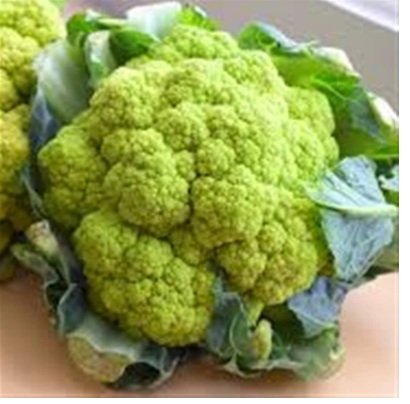Cauliflower
Cauliflower is a nutrient-rich vegetable that is low in calories and high in fiber, vitamins, and minerals. Here are the nutritional facts about cauliflower, per 1 cup of chopped raw cauliflower (about 100 grams):
Calories: 25
Protein: 2 grams
Carbohydrates: 5 grams
Fiber: 3 grams
Fat: 0.3 grams
Vitamin C: 77% of the Daily Value (DV)
Vitamin K: 20% of the DV
Folate: 14% of the DV
Vitamin B6: 10% of the DV
Potassium: 9% of the DV
Manganese: 8% of the DV
Pantothenic acid: 7% of the DV
Magnesium: 4% of the DV
Phosphorus: 4% of the DV
Cauliflower is also rich in antioxidants, which help protect the body against damage from free radicals. Additionally, it contains compounds that may have anti-inflammatory and anti-cancer effects.
Overall, cauliflower is a healthy and nutritious vegetable that can be a great addition to a balanced diet.
The best way to store cauliflower depends on how soon you plan to use it. Here are some tips for storing cauliflower:
Refrigerate: If you plan to use the cauliflower within a few days, you can store it in the refrigerator. Keep it in a plastic bag or wrap it in a damp paper towel to prevent it from drying out. Make sure to remove any leaves or green parts before storing.
Freeze: If you have more cauliflower than you can use within a few days, you can freeze it. To do so, cut the cauliflower into small florets and blanch them in boiling water for 2-3 minutes. Then, plunge them into an ice bath to stop the cooking process. Once they're cool, drain them and pat them dry. Place the florets in a freezer-safe bag and store them in the freezer for up to 6 months.
Pickle: Another way to store cauliflower is to pickle it. Cut the cauliflower into bite-sized pieces and pack them into a jar. Then, heat equal parts vinegar and water, along with some salt and spices, until the salt is dissolved. Pour the mixture over the cauliflower, making sure it's completely covered. Seal the jar and store it in the refrigerator for up to a month
Overall, it's best to use cauliflower as soon as possible for the best taste and texture. But these methods can help you extend its shelf life if you have more than you can use right away.
Cauliflower is a versatile vegetable that can be prepared in many ways. Here are some popular methods for preparing cauliflower:
Roast: Roasting cauliflower brings out its natural sweetness and adds a crispy texture. Simply cut the cauliflower into bite-sized florets, toss with some olive oil and spices, and roast in the oven at 400°F (200°C) for 20-30 minutes.
Mash: You can mash cauliflower as a low-carb alternative to mashed potatoes. Steam the cauliflower until it's soft, then mash it with some butter, milk, and seasonings.
Rice: You can also use cauliflower as a low-carb alternative to rice. Simply pulse the cauliflower florets in a food processor until they're rice-sized, then sauté in a pan with some oil and spices.
Fry: You can fry cauliflower in a batter or breadcrumb coating for a crispy snack or appetizer. Dip the cauliflower florets in a batter made from flour, eggs, and milk or in a breadcrumb mixture and fry until golden brown.
Steam: Steaming cauliflower is a simple and healthy way to cook it. Simply place the cauliflower florets in a steamer basket and steam for 5-10 minutes, until tender.
Grilled: Grilled cauliflower is another tasty option. Cut the cauliflower into thick slices and brush with olive oil and spices, then grill over high heat for a few minutes on each side until charred and tender.
